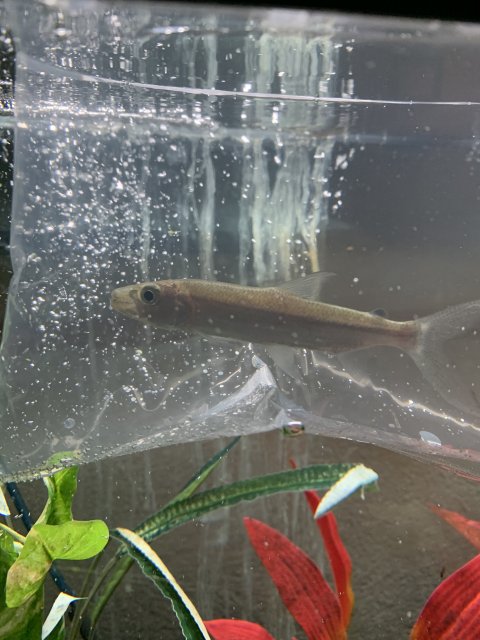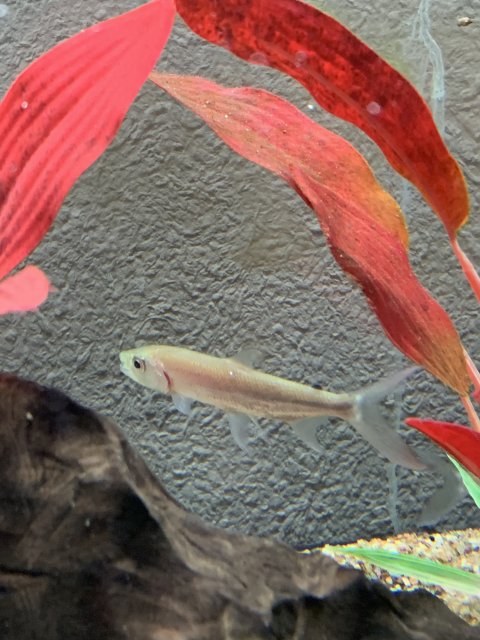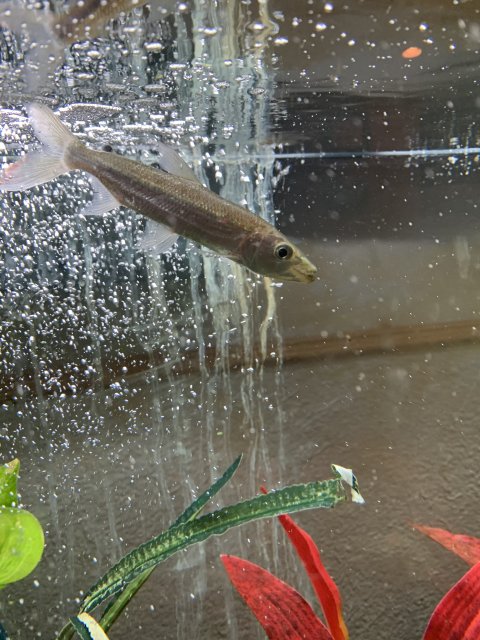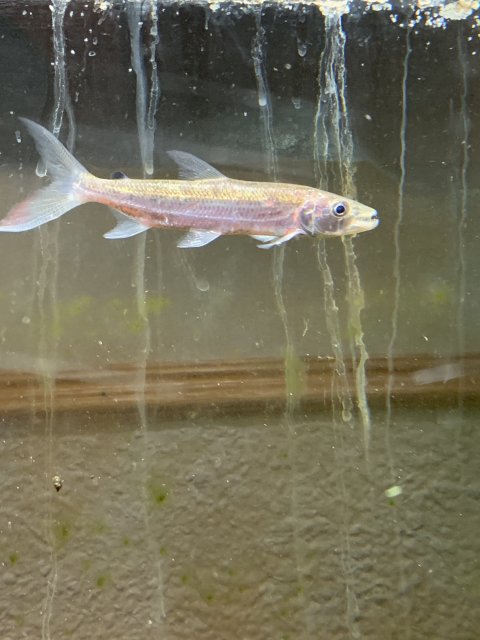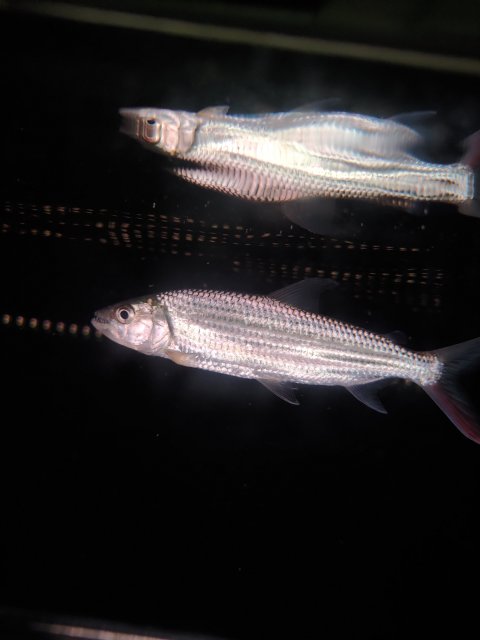Chicxulub's Care Sheet for Hydrocynus
General Housing Requirements
It has been said that African tiger fish are a very difficult group of fish to house in an aquarium. While not exactly true, it is fair to say that in order to thrive, they need a very specialized environment and, as adult, a very large home. As such, if you intend to keep an ATF for life and provide for its needs correctly, you're going to have to be prepared to make a considerable investment of time, money and resources. However, if the fish's basic needs are met, you will find that your new tiger is a very hardy, low maintenance fish.
In the wild, ATF are exclusively restricted to warm, well oxygenated fast flowing rivers and areas of large, open rivers and lakes that possess extremely high dissolved oxygen content (Goodier, Cotterill, O'Ryan, Skelton & de Wit. 2011). One has two paths to choose when providing for these fish; you must choose to emulate one of their preferred habitats. It is advisable to provide current for the primarily riparian species (GATF, VATF, TATF) and good oxygen for the primarily lacustrine species (FATF, BATF). Of course this is just a suggestion, and all five species can be found in both habitats.
The subject of precisely how to provide the current is probably the most common question I have received. If you choose to go this route, the current cannot be violent and arbitrary. You must ensure smooth, consistent laminar flow (
wikipedia) moving from one side of the tank to the other. Providing flow that is nothing more than turbulence will only stress your fish.
Whichever husbandry technique you choose to use, it is important to note that an easily startled young ATF in too large of a tank can easily accelerate sufficiently to cause permenant damage or death upon striking the glass at the opposite end of the enclosure. As such, I have found good luck in using smaller tanks that prevent the fish from going so fast. I also highly recommend using dither fish. Young ATF are a schooling fish that tend to live on or near the littoral shelf in their home waters and are highly vulnerable to predation. The presence of confident happy dither fish helps the ATF remain calm. Unless you've got very deep pockets, it is best to use cheaper dithers as a love tap from an ATF can be fatal to similarly sized tank mates. I recommend tinfoil barbs at a rate of three barbs per ATF within reason for the size of the tank.
H. goliath - 8x4
H. tanzaniae - 8x3
H. vittatus - 8x3
H. brevis - 8x3
H. forskahlii - 8x2
H. goliath rarely exceeds two feet in aquaria. VATF, TATF and BATF rarely exceed 18 inches. I have never seen evidence of a forskahlii being kept at over a foot in length in captivity. There are some fish that are documented as having exceeded those lengths, but they are rare and should be treated as the exception and not the rule. If you manage to even get your fish to those lengths it would have required an investment of years and you have accomplished something very special indeed. It is possible that you could exceed these sizes however, especially with goliath, and if you do you need to be prepared for that fact, unlikely though it may be.
Feeding
Based on the diet of wild ATF, I feel that it is absolutely essential to transition your ATF off of live as soon and as young as you possibly can. To do so is to take advantage of the natural inclinations of the fish. A study by Gagiano (1997) showed that in various populations of tigerfish, the young all tend to transfer to a primarily pscivorous (fish-eating) diet by the time they are 50mm in length. Before they reach that size, the young fish are primarily inclined to live in the shallows and eat insects and occasionally seeds that fall into the water. Adult fish will continue to take insects and seeds throughout their life, but only in circumstances of extreme duress where fish forage is not available.
Due to this change in behavior, it strikes me as opportune to take advantage of a very young ATF's inclination to eat from the surface. A method that I have had phenomenal success with is using tinfoil barbs as teacher fish.
Read more about my method here. It is fair to note that your ATF may fight with the barbs. There is also a chance that the barbs may in turn rough your tiger up, but don't worry, he'll heal quickly. ATF, especially young ones, normally quarrel with each other anyway, so this simulates normal behavior for your fish and won't overly stress it. There is also a good chance that your young ATF will end up slaughtering a barb before it decides to eat pellets, especially if it is a larger specimen and is used to eating fish.
A video showing young ATF who are undergoing pellet training.
For an ATF tank, furniture should be kept to a minimum. The more you put into their tank, the more you have for your flighty torpedo to impale itself on. Furniture will also strongly affect the flow in your tank, which is not desirable for the reasons discussed above. I personally prefer to keep them in a bare tank as I feel that the fish themselves are impressive enough to more than make up for the lack of decoration. The majesty with which a large, healthy apex super-predator such as an African tigerfish presents itself is something that truly has to be seen to be appreciated. If you choose to decorate your sufficiently large African tiger fish tank, a low profile 3D background and a river stone substrate would be attractive without the risk of causing undue harm to the fish. Large pointy driftwood and similar items upon which the fish could be impaled are strongly discouraged. ATF are also capable of a sufficient turn of speed in order to be killed by running into the glass. Should they spook and run into a pointy piece of driftwood, the results could be catastrophic.
Compatibility
African tigers are hard fish to have as cohabitants with most other species. The most obvious issue you will run into is the specialized needs of the ATF. Most large fish that would seem to be compatible will not appreciate the violent current that the tigers require. Fish such as arowanas are a prime example of this. Another issue you will run into is the fact that ATF are very slow growing fishes. Most of the fish that would seem to be compatible with them will outgrow and out compete them very quickly, and in many instances even eat them. There are many, many confirmed instances of an ATF being eaten by a much faster growing tank mate on this site. A prime example of this would be, again, an arowana. If you were to acquire a six inch aro and ATF at the same time and grow them out together, by the time the tiger is nine inches, the arowana could be pushing fifteen. Remember now that while six inches is a common size for an aro, it would be exceptionally large for a new ATF purchase. You can see how this could become a problem...
Brevis has a reputation as being very aggressive and capable of damaging other fish, often more so than its congeners. This is due to an unusual feeding method as described by Lewis (1974) which states that brevis, uniquely among the African tiger fishes, routinely feeds on fishes larger than itself. The brevis will attack a larger prey item by targeting the back third of the prey fish’s body in order to amputate the tail. Once the prey item is incapacitated and has floated to the surface, the brevis will eat the prey item at its leisure by taking bites out of it. Caution should be exercised when housing brevis with other fish. The author can testify to the fearless, bold nature of Hydrocynus brevis. He kept a young specimen that was singularly fearless; this species is easily the boldest and most aggressive species. The author's six inch BATF would terrorize his foot long GATF.
An incredibly bold 6" BATF hand feeding. Courtesy
Chicxulub.
Fishes that work well with ATF are other large, slow growing, current loving fish. Tarpon, payaras, mahseers and large barbs are examples of fish that have proven to be compatible. Bottom dwellers are fairly easy, but you should wait until your tiger is about eight inches to add them to reduce the risk of the ATF getting eaten. ATF tend to completely ignore bottom dwellers, so your primary concern should simply be to ensure that the bottom dweller is a slow grower that will not eat the tiger. Tigrinus and juruense catfish work very well as do bichirs.
Introduction, Acknowledgements & Suggested Reading
General Care
Key to Species
Hydrocynus goliath
Hydrocynus brevis
Hydrocynus forskahlii
Hydrocynus vittatus
Hydrocynus cf. "stout vatf"
Hydrocynus cf. "big eye"
Hydrocynus tanzaniae
References


